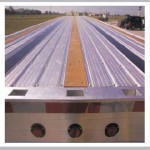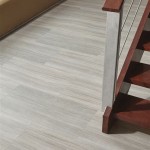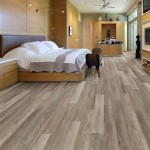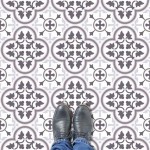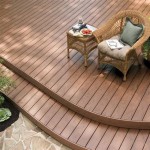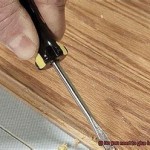Understanding False Wood Flooring: Decoding the Options and Making Informed Choices
False wood flooring, often used interchangeably with terms like faux wood flooring, artificial wood flooring, or wood-look flooring, represents a diverse category of materials designed to mimic the aesthetic appearance of natural wood. It serves as an alternative for individuals seeking the visual warmth and elegance of wood without the associated cost, maintenance demands, or environmental impact often linked to hardwood or engineered wood.
The key to understanding false wood flooring lies in recognizing the variety of materials and manufacturing processes employed to create these wood-like surfaces. These alternatives offer a spectrum of performance characteristics, price points, and aesthetic qualities, making informed selection crucial for achieving satisfactory results. This article provides a detailed explanation of the different types of false wood flooring, examining their composition, benefits, limitations, and ideal applications.
Exploring the Core Types of False Wood Flooring
The market for false wood flooring consists primarily of four key categories: laminate flooring, vinyl flooring (including luxury vinyl plank and tile), wood-look tile, and occasionally, certain types of composite flooring materials. Each of these materials differentiates itself in terms of its manufacturing process, durability, realistic appearance, and installation requirements.
Laminate Flooring: Laminate flooring comprises several layers bonded together under high pressure. The core layer typically consists of high-density fiberboard (HDF) or medium-density fiberboard (MDF). A decorative layer, a high-resolution photographic image of wood grain, is then adhered to the core. This image is protected by a transparent wear layer composed of melamine resin, providing resistance to scratches, stains, and fading. Laminate flooring is commonly installed as a floating floor, meaning it is not directly glued or nailed to the subfloor but instead relies on an interlocking system and underlayment.
Vinyl Flooring: Vinyl flooring employs polyvinyl chloride (PVC) as its primary material. Traditional vinyl flooring may consist of a single layer or multiple layers of vinyl topped with a protective wear layer. Luxury Vinyl Planks (LVP) and Luxury Vinyl Tiles (LVT) represent a more advanced form of vinyl flooring. They are typically thicker and feature more realistic wood grain textures and embossing. LVP and LVT often incorporate a core layer for added stability and dimensional stability. Vinyl flooring offers excellent water resistance, making it suitable for bathrooms, kitchens, and basements. It can be installed using various methods, including glue-down, click-lock, and loose-lay options.
Wood-Look Tile: Wood-look tile, usually porcelain or ceramic, presents a highly durable and water-resistant alternative to natural wood. The tile is manufactured with a printed or embossed wood grain pattern on its surface. Advances in digital printing technology have enabled the creation of highly realistic wood-look tile with variations in color, grain pattern, and texture. Wood-look tile requires professional installation using grout, similar to traditional tile. Its exceptional durability and resistance to moisture make it ideal for high-traffic areas and locations prone to spills or humidity.
Composite Flooring: While less common, certain types of composite flooring materials may also mimic the appearance of wood. These materials often combine different materials, such as wood fibers, plastics, and other polymers. They can offer a unique blend of characteristics, including water resistance and durability. However, the specific composition and performance of composite flooring can vary significantly depending on the manufacturer and the specific product formulation.
Key Considerations When Choosing False Wood Flooring
Selecting the appropriate type of false wood flooring necessitates careful evaluation of various factors, including intended use, budget limitations, aesthetic preferences, and maintenance requirements. A thorough understanding of each material's strengths and weaknesses is essential for making an informed decision. The following are key considerations that must be taken into account:
Durability and Wear Resistance: The durability of false wood flooring is determined by the thickness and composition of its wear layer. Laminate flooring is rated using an Abrasion Class (AC) rating, which indicates its resistance to abrasion and wear. Higher AC ratings signify greater durability. Vinyl flooring's wear layer thickness, measured in mils (thousandths of an inch), also indicates its resistance to wear and tear; a thicker wear layer provides better protection against scratches and dents. Wood-look tile offers exceptional durability due to its inherent resistance to scratching, staining, and impact. The intended traffic level and potential for spills or impacts should influence the selection of a material with appropriate durability.
Water Resistance: Water resistance is a critical factor, particularly in areas prone to moisture, such as bathrooms, kitchens, and laundry rooms. Vinyl flooring and wood-look tile offer excellent water resistance, making them suitable for these applications. Laminate flooring typically offers some water resistance, especially if properly installed with sealed seams. However, prolonged exposure to standing water can damage the core of laminate flooring, leading to swelling and delamination. The construction of composite flooring can affect the water resistance. It is essential to check the manufacturer's specifications regarding water resistance.
Aesthetic Realism: The aesthetic realism of false wood flooring has improved significantly in recent years. High-resolution printing technology and advancements in embossing techniques have enabled manufacturers to create highly realistic wood grain patterns and textures. LVP and wood-look tile often feature textured surfaces that mimic the feel of real wood. The choice of a material that closely replicates the desired wood species, grain pattern, and color tone is crucial for achieving the desired aesthetic outcome.
Installation Requirements: The installation requirements for false wood flooring vary depending on the material type. Laminate flooring is often installed as a floating floor using a click-lock system, making it a relatively straightforward DIY project. Vinyl flooring may be installed using glue-down, click-lock, or loose-lay methods, each requiring different levels of skill and preparation. Wood-look tile requires professional installation using mortar and grout, adding to the overall cost of the project. A careful assessment of the installation requirements and associated costs is essential before making a purchase decision.
Maintenance: False wood flooring generally requires less maintenance than natural wood flooring. Laminate and vinyl flooring can be cleaned with a damp mop and mild detergent. Wood-look tile is resistant to stains and can be cleaned with a variety of cleaning solutions. It is important to avoid using abrasive cleaners or excessive water, especially on laminate flooring. Routine sweeping or vacuuming helps to remove dirt and debris and prevent scratches. Following the manufacturer's recommended maintenance guidelines ensures longevity and preserves the appearance of the flooring.
Cost: The cost of false wood flooring varies significantly depending on the material type, brand, and aesthetic features. Laminate flooring often represents the most budget-friendly option, while wood-look tile typically commands a higher price due to its durability and installation requirements. LVP falls in the mid-range in terms of cost. It is essential to consider both the material cost and the installation cost when comparing different flooring options. Obtain quotes from multiple suppliers and installers to ensure that the budget is considered throughout the consideration process.
Evaluating the Environmental Impact of False Wood Flooring
Environmental considerations are increasingly important when selecting building materials. The environmental impact of false wood flooring varies depending on the material composition, manufacturing process, and disposal methods. Assessing the environmental impact requires careful consideration of the following factors:
Material Sourcing: The sourcing of raw materials used in false wood flooring production can have a significant environmental impact. Laminate flooring often contains wood fibers from sustainable sources, such as certified forests. Vinyl flooring is derived from PVC, a petroleum-based plastic. The production of PVC can release harmful emissions into the environment. Wood-look tile is made from clay and other natural materials, but the mining and processing of these materials can also have environmental consequences. The use of recycled content in the flooring material can help to reduce its environmental footprint.
Manufacturing Processes: The manufacturing processes used to produce false wood flooring can consume significant amounts of energy and water. The energy used in the manufacturing process can contribute to greenhouse gas emissions. Some manufacturers are adopting more sustainable production practices, such as using renewable energy sources and reducing waste. Look for products that are certified by environmental organizations, such as the Forest Stewardship Council (FSC) or the FloorScore program, to ensure that they meet certain environmental standards.
Volatile Organic Compounds (VOCs): Some false wood flooring materials can emit volatile organic compounds (VOCs), which are airborne chemicals that can negatively impact indoor air quality. Laminate and vinyl flooring may contain VOCs in their adhesives or coatings. Wood-look tile is generally considered to be VOC-free. Look for products that are certified as low-VOC or VOC-free to minimize the potential for indoor air pollution. Proper ventilation during and after installation can also help to reduce VOC emissions.
Disposal: The end-of-life disposal of false wood flooring can also have environmental consequences. Laminate and vinyl flooring are typically not biodegradable and may end up in landfills. Wood-look tile is highly durable and can last for many years, reducing the need for frequent replacement. Some manufacturers are developing recycling programs for false wood flooring materials to reduce waste and promote a circular economy. Consider the long-term durability and recyclability of the flooring material when making a purchase decision.
By carefully evaluating the different types of false wood flooring, considering the key factors outlined above, and assessing the environmental impact, individuals can make informed choices that align with their needs, budget, and environmental values.

The Best Fake Wood Flooring 4 Faux Floor Ideas Inc

The Best Fake Wood Flooring 4 Faux Floor Ideas Inc

8 Fake Wood Flooring Options 2024 A Full Guide And Reviews

Laminate Vs Hardwood Flooring Major Differences Forbes Home

Is Engineered Hardwood Real Or Fake Wood

Laminate Flooring The Home Depot

Smooth Wooden False Flooring Size Dimension 6 X36 Thickness 3mm To 15mm At Rs 120 Square Feet In Kolkata

Our Flooring Solid Wood Vs Faux Tile Chris Loves Julia

Laminate Wood Flooring Ideas

Engineered Flooring Vs Laminate Everything You Need To Know Forbes Home
Related Posts

